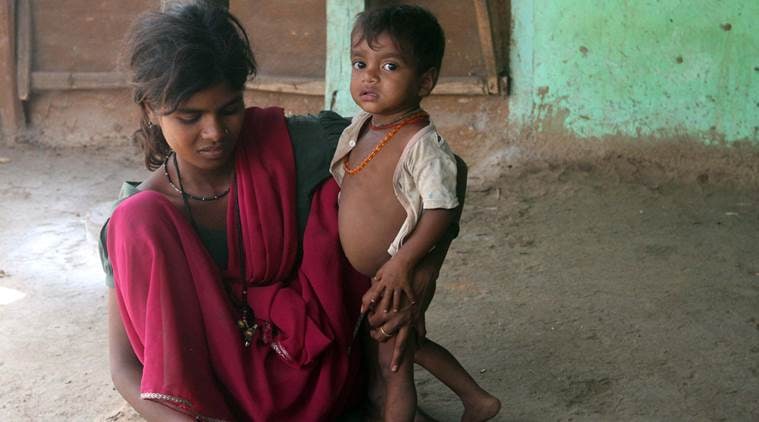 The researchers have found that the thinness in boys and girls was 22.3 per cent and 9.9 percent in NFHS-3 and 16.5 percent and 9 percent in NFHS-4, estimates that were substantially lower. (Representational)
The researchers have found that the thinness in boys and girls was 22.3 per cent and 9.9 percent in NFHS-3 and 16.5 percent and 9 percent in NFHS-4, estimates that were substantially lower. (Representational)
A reanalysis of the nutritional status of adolescents in the age group of 15 to 19 years included in the National Family Health Surveys (3 and 4), found that thinness may have been overestimated by more than two folds and also missed high levels of stunting, according to a new study reported recently in PloS One
After using the recommended World Health Organisation (WHO) 2007 growth reference to the NFHS data on this group of adolescents, a very different picture emerged, said researchers.
The 15-19 year olds classified as thin comprised 58.1 percent and 46.8 percent in NFHS-3, and 45 per cent and 42 per cent in NFHS-4, in boys and girls respectively. But the researchers found that the thinness in boys and girls was 22.3 per cent and 9.9 percent in NFHS-3 and 16.5 percent and 9 percent in NFHS-4, estimates that were substantially lower.
“The other finding in our study was the prevalence of stunting (low height-for-age), which was not reported in the 15-19 age group at all in the NFHS,” Professor Anurag Bhargava, one of the authors of the paper `Nutritional Status of Indian adolescents 15-19 years from NFHS 3 and 4 : revised estimates using 2007 growth reference’, told The Indian Express.
Stunting was prevalent in 25.2 per cent of boys and 34.1 per cent of girls in NFHS-3 (2005-6), while in the NFHS-4 ( 2015-16) the prevalence in boys increased to 32.2 per cent, while the prevalence in girls remained almost static at 34.4 per cent, according to Bhargava , a professor at the Department of Medicine at Yenepoya Medical College, Mangalore.
These results should be seen against the backdrop of the nutritional status of those under five years old in India. The NFHS-4 noted that 38 per cent of children under five were stunted and 35 per cent of them were underweight. These levels of malnutrition contribute to the high mortality of under-fives in India. According to the researchers from Yenepoya (Deemed to be University), Mangalore, this suggests that “this high level of stunting seems to be persisting in late adolescents and is a grim reality.
The NFHS has been conducted at regular intervals in India since 1992–93 by the Ministry of Health and Family Welfare and coordinated by the International Institute of Population Sciences Mumbai.
The NFHS is a periodic health and demographic survey that includes information on nutrition of children under the age of five years, and adult men and women It does not include children in the age group of 5-9 years and early adolescents in the age group of 10-14 years. So, while the NFHS provide vital information on nutrition in under-fives, it has missed out on reporting on nutrition in late childhood and early adolescents (5-14 years), which include the period of rapid growth.
Late adolescents, those in the 15-19 age group, were included in the surveys, but the authors of the study noted a problem. These adolescents were clubbed with the adults, and adult cut-offs for classification of nutritional status were applied. The WHO, however, recommends that children between 6 and 19 years be assessed for thinness using age and gender-specific cutoffs of BMI(body mass index) for age and height-for-age to assess thinness and stunting respectively.
Although a large proportion of children become stunted in the first 1,000 days, there is still an opportunity for catch up growth and recovery later in childhood and adolescence, if adequate nutrition is available. These figures suggest that one in three adolescents are missing these opportunities because of lack of dietary adequacy and diversity.
Dr Bhargava underlined the need to reduce malnutrition in children and adolescents to reap the demographic dividend of a young population and urged that future editions of NFHS should cover all children and adolescents, and use appropriate standards.